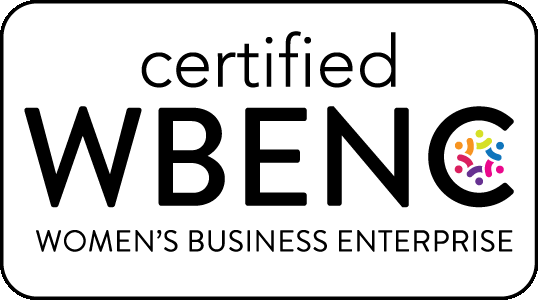By Teryl Taglieri
Founder & Communication Strategist
April 2020
The dramatic impact of the COVID-19 outbreak on the business world and the lives of every one of our employees is transforming the employee experience. We are inspired by what some of our clients are doing to tackle this unprecedented challenge and course-correct where necessary.
Here’s a best practice employee communication checklist of what to do right now. (Click here for a printable PDF version. Follow us on LinkedIn for more updates.)
Keep Leaders “Front & Center” Until This Crisis Ends
Now more than ever employees are looking to their company for information. They want to know what the company is doing next and why. Leaders should focus on what they can do for their employees. Empathy is critical. Messages need to come from a place of care and compassion.
Quick Wins & Examples
• Communicate the cadence of leader updates (e.g., every Thursday, every 48 hours)
• Have leaders hold regular Q&A sessions with employees; solicit questions in advance
• Check out this video from Marriott CEO on communicating with compassion and transparency
• Encourage your leaders to be authentic (e.g., dress more casually, invite their kids or pets for a “cameo” during a live call video call)
• Use multiple channels (email, video, webinars, intranet, social channels, etc.)
Establish a Single Source of Truth for Employees
Right now, employees need constant updates, but too much communication reaches a point of diminishing returns. To avoid this, create a “one-stop-shop,” a microsite or dedicated intranet page with consolidated, curated information (safety, benefits updates, travel and work-from-home policies, leave information, etc.). This also offers your employees a centralized platform for two-way communication.
Quick Wins & Examples
• Leave the facts on the virus to the experts; refer employees to the Centers for Disease Control and Prevention (CDC)
• Send a weekly round-up with a consolidated summary of the week’s updates and key information
• Post a banner on your intranet for COVID Information as an easy-to-find quick link for employees
• Provide a running list of regularly updated Q&As in an easy-to-access location
Reassess Your Business-As-Usual Communications
Some projects and communications need to be postponed, but others – say the launch of your new onboarding portal – may still need to happen. Communicating about “regular stuff” can give employees a sense of normalcy. But first, carefully strategize appropriate timing and how content and messaging needs to shift. You can still celebrate Autism Month, for example, but evaluate the frequency of messages and say it with a story that employees can relate to right now (e.g., tips for working at home with an autistic child).
Quick Wins & Examples
• Messaging should come from a place of caring and compassion, especially from leaders and managers
• Don’t let great be the enemy of good – in other words, getting it done is better than making it perfect!
• Avoid being “tone deaf” with business-as-usual content and messaging: consider your workforce demographics (essential workers vs those working from home, etc.) and your employee needs
Remember the Silver Lining
Mr. Rogers said, “When I was a boy and would see scary things in the news, my mom would say look for the helpers; you can always find people helping…” We all need some optimism and good news now. Continually share the good news about what your company is doing to help employees, your community or health care workers. Your employees are also doing great things; find and share those stories. And finally, build a sense of community and connection for employees. Knowing we’re not in this alone, inspires us all.
Quick Wins & Examples
• Tap into employee resource groups (ERGs)/affinity groups to share tips and make connections, such as a working parent ERG
• Build a sense of community and try to have some fun: video happy hours/coffee breaks, cutest pet contests, share your favorite recipes, video compilation about working from home, etc.
• Give managers tools and tips to support employees (e.g., no meetings on Monday mornings, shorten meetings/video calls to 30 minutes, follow-up with quick-read action items or checklists)
Can You “Say It” With a Picture Instead of Words?
We are all being bombarded with a tremendous amount of information and the human brain’s capacity for processing information significantly decreases under stress. All organizations need to get information out quickly, but before you hit send on that long email, take a few minutes to consider how you’re presenting it. Complex information, in particular, can often be better communicated visually (e.g., icons, infographic or video).
Quick Wins & Examples
• Instead of lengthy emails or posts, consider using video, infographics, icons, checklists and charts
• Make content “snackable” – it should scannable, with clear headings and bullet points
Communication Insight
Although communicating during a pandemic is new for all of us, sticking with tried-and-true communication principles gives a solid foundation for communicating in this moment. If you need support with COVID-19 communications, The O’Keefe Group can help with strategy, messaging and creative services. Contact us.



